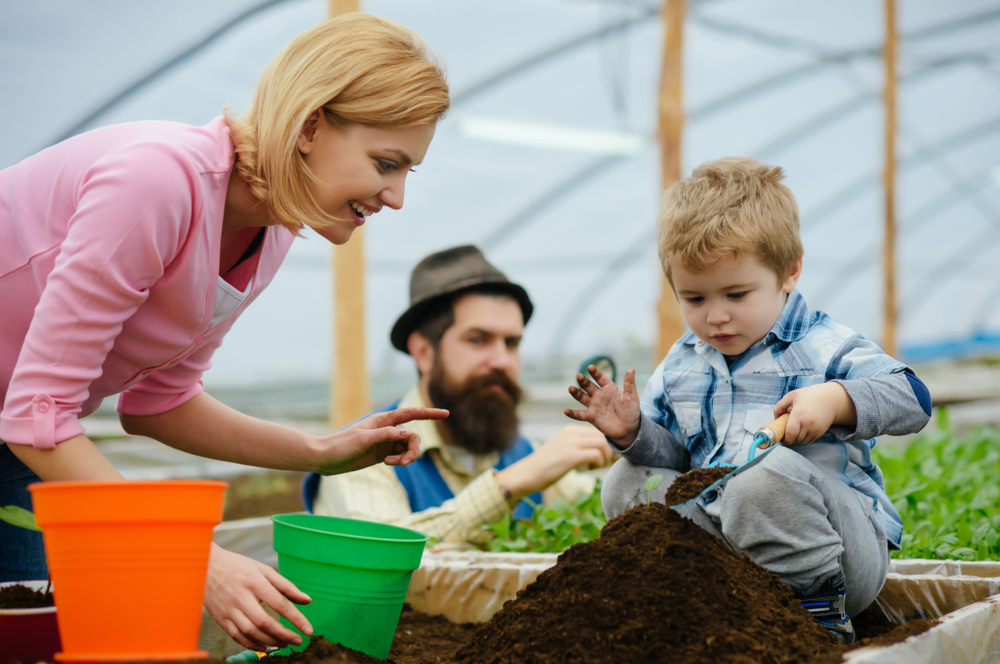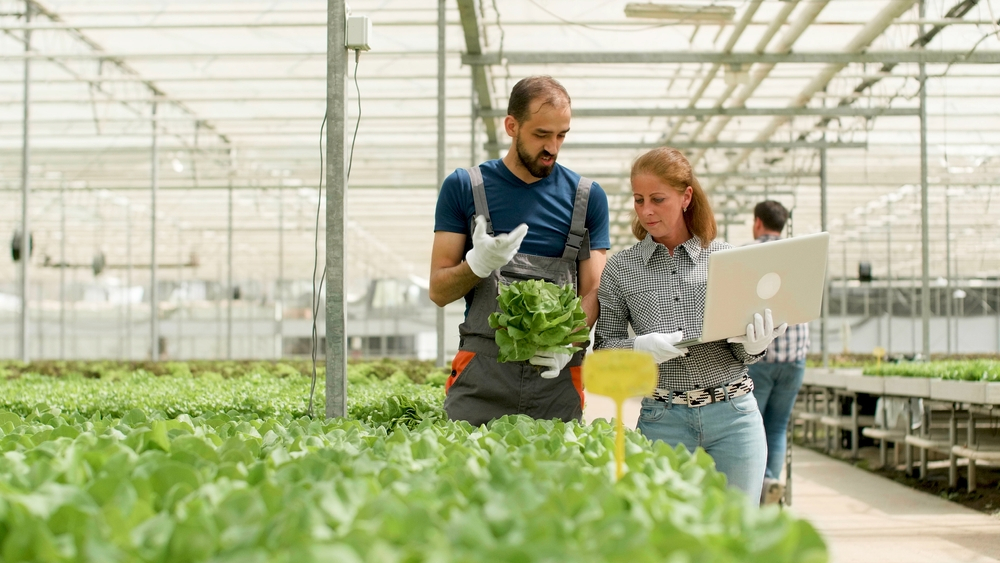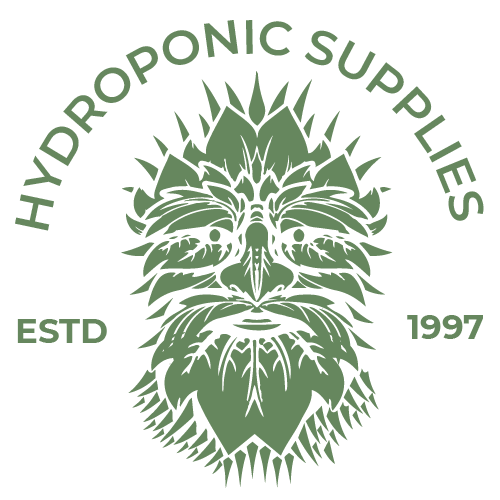
What is hydroponically grown hydro plant? What is hydroponics? What is hydroponic garden? What are hydroponic supplies? Where to find hydroponic store?
Creative Grow Store know the confusion of hydroponic system revolving around you. So, in this guide, we are going to explain you the rocket science behind hydroponic garden. How hydroponic garden works and what are the precautions one should follow for effective hydroponic gardening. Explore all details and make your own garden where you grow healthy and eat healthy.
What Is Hydroponic Garden?
A hydroponic garden is a way of producing hydro plants that does not require soil. It employs a nutrient-rich water solution to supply vital minerals and nutrients to the plant’s roots. Plants are often cultivated hydroponically in a controlled setting, such as a glasshouse or indoor grow room, where elements like temperature, humidity, and light may be precisely adjusted to optimize plant development.
Faster growth rates, improved crop yields, effective use of water and nutrients, reduced reliance on pesticides and herbicides, and the capacity to grow plants in areas with poor or polluted soil are all advantages of hydroponic farming. It is a popular commercial and hobbyist method for producing a broad variety of crops, including vegetables, herbs, and certain fruits.
How to Care for Hydroponic Garden?
Wondering how does hydroponic garden work? Below mentioned is a complete guide to understand the nature of how a basic hydroponic system works:
Although hydroponic systems don’t use soil, they often use an inert growing medium to provide support and stability for the plant roots. Common growing mediums include coconut coir, perlite, vermiculite, and rockwool. The growing medium helps anchor the plants and retains moisture.
The nutrient solution is a carefully balanced mixture of water and essential plant nutrients, including macronutrients (nitrogen, phosphorus, potassium) and micronutrients (iron, calcium, magnesium, etc.). This solution is mixed according to the specific requirements of the plants being grown.
The nutrient solution is typically delivered to the plant roots in one of several ways, depending on the type of hydroponic system being used:
- Drip System-In this method, the nutrient solution delivers to the base of each plant via a network of tubes or hoses. It drips onto the growing medium and absorb by the roots.
- Nutrient Film Technique (NFT)-NFT systems involve a shallow, sloping channel where a thin film of nutrient solution flows over the plant roots, providing nutrients and oxygen.
- Deep Water Culture (DWC)-In DWC, plant roots submerge in a nutrient-rich solution, often in a container or tank. Air stones or diffusers are used to provide oxygen to the roots.
- Aeroponics-This advanced system suspends plant roots in the air and uses misters or atomizers to deliver nutrient solution as a fine mist, allowing for high oxygen levels around the roots.
Adequate lighting is essential for photosynthesis. In indoor hydroponic systems, artificial lighting sources like high-intensity discharge (HID) lights, fluorescent lights, or LED grow lights are used to provide the necessary light spectrum for plant growth. The duration and intensity of light are carefully control to mimic natural daylight.
Maintaining the correct pH level and electrical conductivity (EC) of the nutrient solution is critical. Different plants have specific pH and EC requirements, and these factors affect nutrient uptake. pH gets adjust using pH control solutions, and EC monitors to ensure nutrient concentration is within the desired range.
Controlling the temperature and humidity in the growing environment is crucial for preventing stress and diseases in hydroponically grown plants. Climate control systems, such as heaters, fans, and dehumidifiers, use to maintain optimal conditions.
Successful hydroponic gardening requires regular monitoring of nutrient levels, pH, EC, temperature, and humidity. Any adjustments or maintenance tasks require to keep the system running smoothly are carried out as required.
How to Build Hydroponic Garden?

Building a hydroponic garden allows you to grow plants without soil, using nutrient-rich water solutions instead. Hydroponic gardening is an efficient and space-saving way to cultivate various plants, including vegetables, herbs, and even flowers. Here’s a step-by-step guide on how to build a hydroponic garden:
Step 1: Select the Adequate Place Matching all the Requirements of Hydroponic Garden
Decide whether you want an indoor or outdoor hydroponic garden. Indoor gardens are safe from environmental factors and allow for year-round cultivation. Must check your context regarding light effect and else basic requirements.
Step 2: Gather Hydroponic Garden’s Equipment’s & Supplies
Get the necessary hydroponic supplies and equipment like:
- Hydroponic system (e.g., DWC, NFT, Drip, or Aeroponics)
- Reservoir tank
- Nutrient solution
- Growing medium (e.g., rockwool, perlite, or coconut coir)
- pH meter and pH adjusting kit
- Lighting (e.g., LED or high-intensity discharge lights)
- Ventilation system (if indoors)
- Timer for lighting and nutrient delivery
- Thermometer and humidity gauge
Step 3: Set Up the Hydroponic System
Choose the type of hydroponic system that suits your plants’ needs.
Assemble the system according to the manufacturer’s instructions.
Ensure that the system is level and stable.
Step 4: Prepare the Nutrient Solution According to Plants Need and Manufacturer’s Guidance
Follow the manufacturer’s guidelines to mix the nutrient solution in the reservoir tank.
Monitor and adjust the pH level to keep it within the optimal range for your plants (typically 5.5 to 6.5).
Step 5: Plant Your Hydroponic Plants Carefully
Place your chosen growing medium (rockwool, perlite, etc.) into the system’s planting containers.
Carefully transplant your hydroponic plants into the growing medium.
Ensure that the plants’ roots are in contact with the nutrient solution.
Step 6: Provide Adequate Lighting and Ventilation According to the Need
Install appropriate lighting fixtures over your plants to simulate natural sunlight. Adjust the light duration according to the needs of your plants.
Maintain proper ventilation and airflow, especially in indoor systems, to prevent mold and mildew.
Step 7: Regularly Monitor Plants’ Growth and Maintain Nutrient Solution
Regularly check the nutrient solution’s pH and adjust it as needed.
Keep an eye on the nutrient levels in the reservoir and top up when necessary.
Clean and maintain the system to prevent clogs and contamination.
Prune and care for your hydroponic plants as they grow.
Step 8: Harvest Your Hydroponic Plants Once They Become Mature
Harvest your plants when they reach maturity, typically at different times depending on the type of plant.
Enjoy the fresh produce from your hydroponic garden!
Step 9: Include Different Option of Hydroponic Plants’ Nutrients for Better Growth
If you encounter issues, such as nutrient deficiencies or plant diseases, research and address the specific problems to maintain healthy growth.
Step 10: Expand the Hydroponic Garden and Try Different Plants for Experiment
Once you have mastered the basics, consider expanding your hydroponic garden or experimenting with different plant varieties and hydroponic systems.
What Are The Types Of Hydroponic Water Systems?

There are several types of hydroponic water systems, such as:
Plants are suspended in a nutrient-rich fluid, and oxygen is delivered to the roots via air stones or diffusers in deep water culture.
A shallow, sloping channel permits a thin film of fertilizer solution to flow over the plant roots using the fertilizer Film Technique (NFT).
Drip systems, nutrient solution is given to the base of each plant via tubes or hoses, usually with the help of a drip emitter.
Aeroponics involves suspending plant roots in the air and delivering nutritional solution as a fine mist via misters or atomizers.
A passive system in which a wick sucks nutrient solution from a reservoir into the growth media. Plants are regularly inundate with fertilizer solution and then let to drain, allowing oxygen to reach the roots during the draining phase.
Continuous flow, like NFT, but with a continuous flow of fertilizer solution over the roots.
Each technique has benefits and is best suited to different plant varieties and farmer preferences.
What Are The Crops For Hydroponic Garden?
Explore what are the best plants to grow in hydroponic garden with Creative Grow Store.
The “best” plants to grow in a hydroponic garden depend on your goals, available space, and experience level. However, some plants tend to perform exceptionally well in hydroponic systems due to their adaptability and growth characteristics.
Lettuce and Leafy Greens: Varieties like butter-head lettuce, romaine, and kale are popular choices due to their rapid growth and high yield.
Herbs: Basil, cilantro, parsley, and mint are commonly growing herbs in hydroponics.
Tomatoes: Determinate tomato varieties, which are more compact and produce a defined crop, are suitable for hydroponics.
Cucumbers and Peppers: These fruiting vegetables can also thrive in hydroponic systems.
Microgreens: These small, nutrient-dense greens are a popular choice for hydroponic growers because of their rapid growth and high market value.
Why Growing Light Is Important In Hydroponic Garden?
Light is crucial in hydroponic gardening because it is the energy source for photosynthesis, the process by which plants convert light energy into chemical energy (sugars) to fuel their growth. In indoor hydroponic systems, artificial grow lights provide the right spectrum and intensity of light, as natural sunlight may not be sufficient or consistent.
Key reasons why lighting is important in hydroponic gardens include:
Year-round Growing: Artificial lighting allows growers to cultivate plants year-round, overcoming seasonal limitations.
Control Over Growth: Grow lights enable precise control over light duration and intensity, which is essential for optimizing plant growth.
Crop Selection: Different plants have varying light requirements, and artificial lighting allows growers to accommodate a wide range of crops.
Indoor Cultivation: For indoor hydroponics, grow lights are essential since natural sunlight may not penetrate the building sufficiently.
Supplemental Light: In some cases, grow lights use as a natural light to ensure consistent and optimal growth.
Conclusion:
A hydroponic garden works by providing plants with the essential nutrients they need to grow, without using soil as a growing medium. Ultimately, the best plants for your hydroponic garden will depend on your preferences, space, and resources. Beginners often start with lettuce and leafy greens due to their simplicity and fast growth, while experienced growers may experiment with a wider variety of crops.
Remember that hydroponic gardening requires some experimentation and fine-tuning to achieve the best results. Keep learning and adapting to the needs of your plants to grow a successful hydroponic garden.
By closely managing these variables, hydroponic gardeners can create an environment that maximizes plant health, resulting in faster growth rates and potentially higher yields compared to traditional soil-based gardening. Additionally, hydroponics allows for precise control over the growing conditions, making it suitable for various crops and environmental conditions. If you are looking for hydroponic Perth, hydroponic supplies near me or hydroponic equipment supplier, creative grow store is looking to assist you with best hydroponic solutions.
